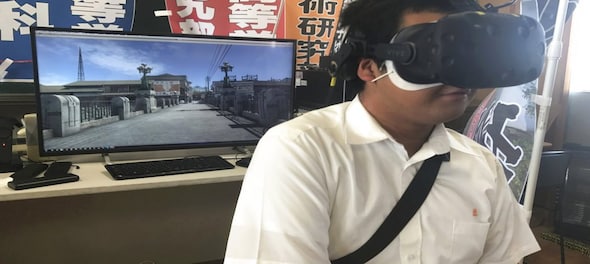
It is common for people to lose their spatial orientation while wearing Virtual Reality (VR) devices. The result? A whole lot of blissfully unaware people clattering into all sorts of objects surrounding them. Several injuries resulting from such sensory deprivation have been reported across the globe by The Wall Street Journal (WSJ).
VR gaming requires users to wear the VR device over their eyes, thus disconnecting them from the real world and immersing them into the virtual one. To simulate movement in this digital universe, users must also move around with the VR devices. Combine this with closed spaces, and accidents are bound to happen.
For all the early adopters of the metaverse, this raises several concerns. The metaverse is a fully digital universe wherein all activities and experiences of the physical world are replicated in the virtual world. To access the metaverse, users must possess VR devices and a stable connection to the internet, both of which are fairly common today.
The onset of COVID-19 has accelerated people’s migration to the metaverse and contributed to its ancillary industries too, one of which is VR. According to International Data Corporation, VR device sales have shot up 20 percent since 2020 to a whopping 7.9 million units. And while VR sets do offer an immersive experience, the sensory deprivation they cause is becoming a source of pain for users around the world.
James McLay, a VR gamer from Scotland, suffered a horrible incident while playing the sword-fighting game 'Until You Fall'. In an attempt to strike his enemy in the game, he lost his spatial orientation and swung his hand hard, only to hit a nearby metallic shelf. This resulted in him being unable to bend any finger on his right hand for about a week. The young man had also ended up punching his television set once. However, these incidents weren’t enough to discourage the 30-year-old from playing again. He now uses a floor mat to feel and gauge the available space with his feet. But at least he’s taking precautions.
Similar incidents came to light when Nintendo Co. first introduced the Wii to the world in the mid-2000s. Many Wii users hurt themselves playing with the motion-sensing controllers while heavily engrossed in their games. However, Wii did not cut off users from the real world as VR does. And this significantly increases the risk of injury.
Jay Kim, associate professor of Environmental and Occupational Health at Oregon State University, has also come across and studied VR injuries. In a conversation with the WSJ, he advised VR users to take frequent breaks and realign their senses with the real world. Not doing so exposes them to the risk of developing the ‘gorilla arm’ syndrome--a pain that arises from keeping one’s arms raised for prolonged periods.
VR gaming cannot be set up in the corner of a room like a television set. Users must allow themselves space to move around freely without hurting themselves by coming in contact with furniture or other potentially harmful items.
What can VR users do to avoid such injuries when exploring the metaverse?
Tinkering with devices that result in partial sensory inputs to your body can lead to severe damage or injury. While there is a lot of activity happening in the metaverse that users are curious to experience, the onus of exercising control and caution in the real world lies with the user.



